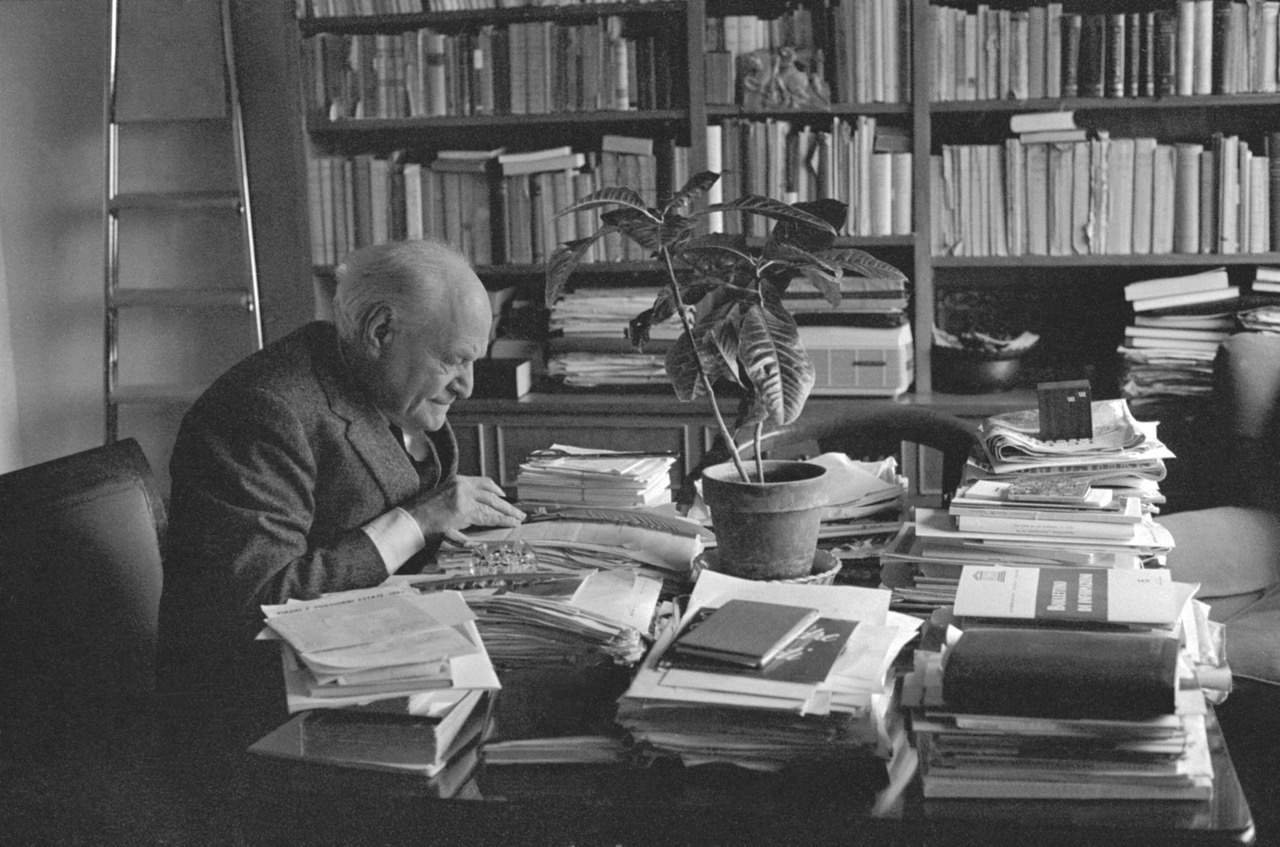Florence, at Tornabuoni Arte an exhibition celebrates the artists Ungaretti knew and about whom he wrote
From May 17 to July 12, 2024, the Tornabuoni Arte gallery presents Pittura e poesia. Ungaretti and the Art of Seeing, an exhibition that intends to celebrate literature and the visual arts in the figure of the poet Giuseppe Ungaretti (Alessandria d’Egitto, 1888 - Milan, 1970), paying homage to him with a selection of works by artists he knew, frequented and about whom he wrote. For this occasion, two unpublished works by Piero Dorazio, dedicated to Ungaretti, will be presented for the first time. Curated by essayist and literary critic Alexandra Zingone, the exhibition traces a panorama of Italian and European art between the 1910s and 1970s through the poet’s words, presentingalongside archival materials, writings, correspondence and poetry, a selection of works by Giacomo Balla, Ardengo Soffici, Carlo Carrà, Gino Severini, Amedeo Modigliani, Giorgio de Chirico, Pablo Picasso, Enrico Prampolini, Ottone Rosai, Jean Fautrier, Franco Gentilini, Giuseppe Capogrossi, Alberto Burri and Piero Dorazio.
Giuseppe Ungaretti arrived in Paris in 1912, at a time when the European capital was at the height of artistic and cultural activity. His encounter with the international avant-garde profoundly marked his life, fascinated by artistic experimentation and trends. Many years later, in Rome, he was confronted instead with Italian artists such as Dorazio, Capogrossi and Burri. The intensity of these encounters, from Paris to Rome, made him much more than a privileged witness of an unparalleled artistic epoch: in fact, Ungaretti developed his own poetics in the continuity of languages, nurturing a deep fascination for painting and thus making possible an encounter between the arts.
The exhibition was first presented at the Paris venue in April 2023. On display in Florence, compared to the Paris exhibition, are for the first time, two unpublished works by Piero Dorazio, Untitled, from 1968, made for the poet’s 80th birthday, and Model and Source for Many Horizons from 1969, from Casa Ungaretti with a dedication to the master and friend, testifying to the intellectual and affective fellowship that bound them together throughout their lives, and which, between 1966 and 1969, gave rise to the artist’s book La Luce. Poems 1914-1961. With XIII lithographs by Piero Dorazio, St. Gallen, Erker, 1971, where literature and art, poetry and painting come together. In the exhibition, from the Parisian period, the choice falls on works such as Tasse et paquet de tabac (1922) by Picasso, whom Ungaretti frequented as a young man and whom he calls “the most extraordinary draughtsman, the most inexhaustible of resources there ever was.” Figurative works such as Young Sitting Girl (1905) by Amedeo Modigliani, Light in the Light (1928) by Giacomo Balla, and The Balcony (la Fenêtre), circa 1930, by Gino Severini are also on display. The exhibition continues with some paintings by Carlo Carrà and Ottone Rosai. Also documenting the relationship established with some artists in Rome, as well as with Dorazio, are some examples from the Surface, from the mid-1950s to the early 1960s by Giuseppe Capogrossi, “the most varied, so furiously equal to himself, the most varied painter there is in the world,” according to the poet. Also from around the same years are, more or less, a Tar (1950) and a Combustion (1960) by Alberto Burri, whom Ungaretti says he loves “because he is not only the greatest painter of today but also the main cause of envy for me: he is of today the first poet.”
The exhibition is accompanied by a catalog published by Forma Edizioni, along with a specially produced plaquette with an essay by Alexandra Zingone entitled “Model and Source of Many Horizons.” Dorazio for Ungaretti.
For info: www.tornabuoniart.com
Hours: Monday through Friday from 9 a.m. to 1 p.m. and 3 to 7 p.m. Free admission.
Image: Giuseppe Ungaretti at his desk (Rome, 1963) ©️Farabola: Alamy banque d’Images
 |
| Florence, at Tornabuoni Arte an exhibition celebrates the artists Ungaretti knew and about whom he wrote |
Warning: the translation into English of the original Italian article was created using automatic tools. We undertake to review all articles, but we do not guarantee the total absence of inaccuracies in the translation due to the program. You can find the original by clicking on the ITA button. If you find any mistake,please contact us.



























